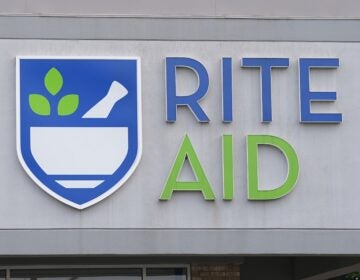Delaware City residents getting a read on their air quality
Residents of Delaware City are hoping a new monitoring effort will give them a better sense of what effect the nearby refinery has on the air they breathe.
Air monitors in three residential areas near the Delaware City Refinery are testing for dust, volatile organic compounds, sulfur dioxide and ammonia for two weeks this month.
Sarah Bucic, of the Delaware City Environmental Coalition, said they will compare the results with air samples taken last year when the refinery was temporarily closed.
“I think it would be absolutely wonderful if we found nothing,” Bucic said. “What I think we will find is that there probably will be some effect of the refinery.” The $32,000 baseline testing was financed by the refinery. The current and final round is being paid for by fees levied on polluters.
“The long term goal is to see what’s going on in the community and then possibility connect that up with some of the health experiences people are experiencing and see if there’s any connection,” Bucic said. Studies have shown that cancer rates in the census tract including Delaware City are significantly higher than the state average.
Historically, some parts of the refinery ranked among the nation’s dirtiest, and previous owners were under court order to upgrade the plant to reduce emissions. Though many say the refinery has cleaned up its act since it re-opened under new ownership last year, residents still complain of occasional flare-ups and rotten egg odors.
“The smells can be horrendous at times, and the flares, when they go off, everybody gets very nervous, because you know that something’s coming out and it’s very hard to believe that it can’t have any effect on us,” said Delaware City resident Barbara Johnson. The state of Delaware monitors for emissions at the refinery, and uses computer modeling to project air quality in areas downwind. But it currently does not test for pollution in residential areas directly. Determining a relationship between air pollutants and health outcomes such as cancer, asthma or heart disease requires large and expensive epidemiological studies. But finding out what is actually in the air is a first step.
“These types of community monitoring efforts really help us to kind of say ‘Hey, there’s a problem, and we need to rally behind it to do some things that are going to prevent future health effects going forward,’” said Julie Becker, head of the Women’s Health and Environmental Network, a division of the Philadelphia Physicians for Social Responsibility. Becker said efforts like the Delaware City air testing have become more common in recent years.
“Citizens are becoming more engaged in finding out what is causing them to be sick within their homes,” Becker said. “They’re no longer relying on local, state or federal agencies to protect them, they are banding together to create this sort of public form with which to take this on themselves.” The Delaware City Refinery said they support the effort and are waiting to see what the results show.
“We feel strongly that we support the community in its efforts,” said Barbara Roehl, a representative of the refinery, at the installation of one of the monitors last week.
The Delaware City Environmental Coalition expects to have results to share in May.
The equipment runs eight hours a day and records daily averages, so if there is a large release outside of monitoring hours it will not be recorded.
The Delaware City Environmental coalition is working on another project to collect that kind of data down the road. The group will train a dozen people in the community to take air samples when there is a flare-up, then send those away to a lab, so they can get a read on air quality during the times they are most concerned.
WHYY is your source for fact-based, in-depth journalism and information. As a nonprofit organization, we rely on financial support from readers like you. Please give today.




